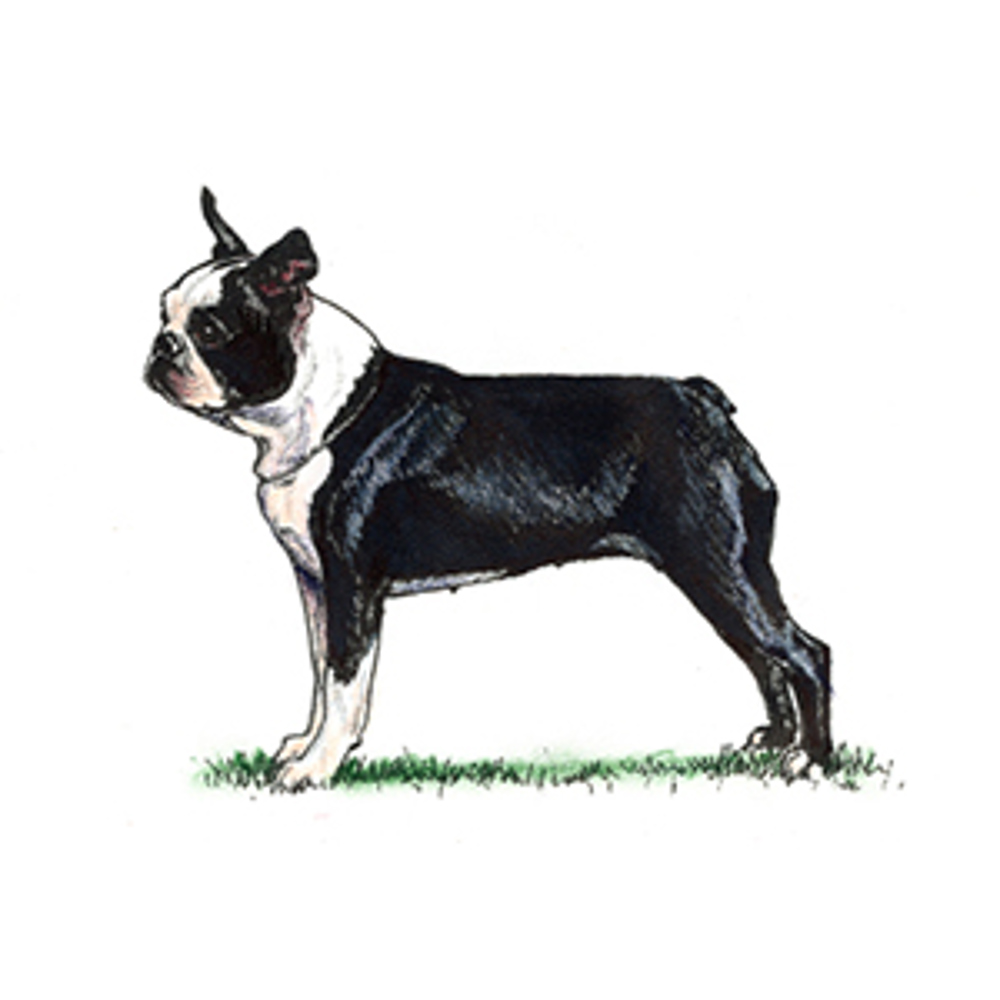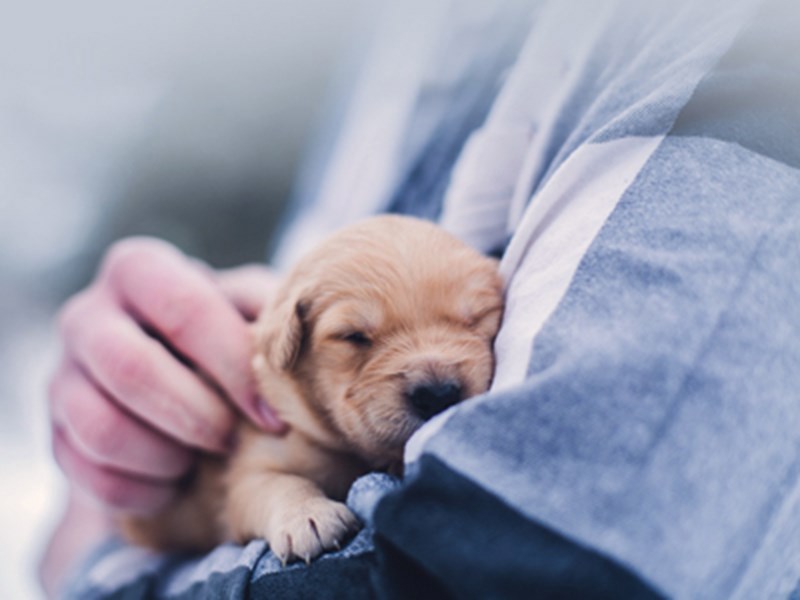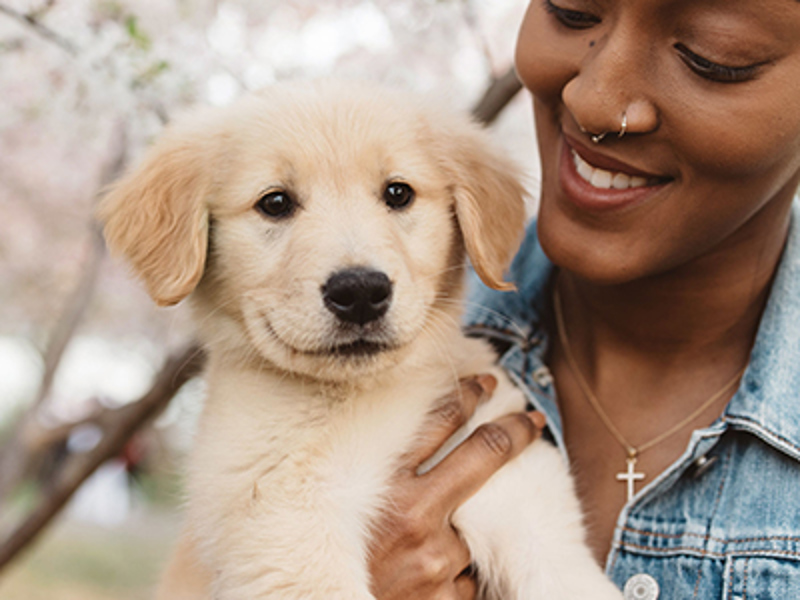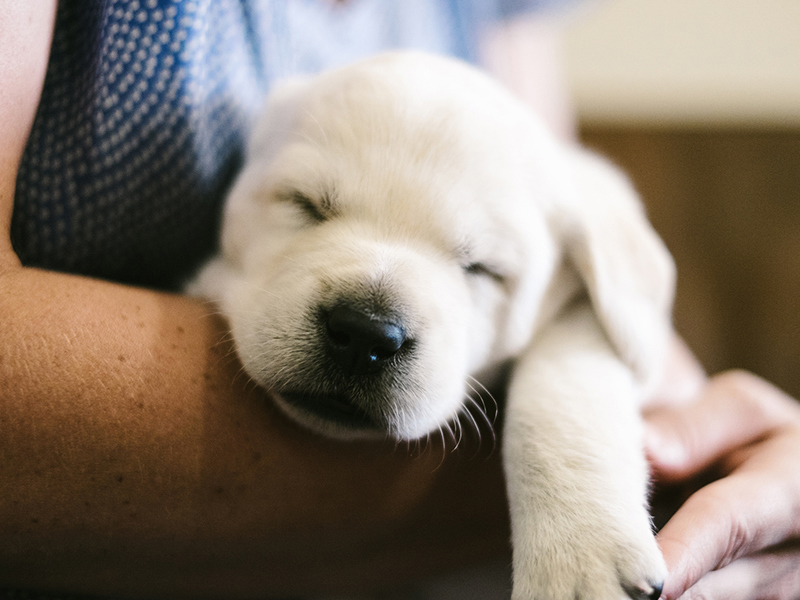
Boston Terrier
Breed characteristics
- Size
- Small
- Exercise
- Up to 1 hour per day
- Size of home
- Flat/ Apartment
- Grooming
- Once a week
- Coat length
- Short
- Sheds
- Yes
- Lifespan
- Over 10 years
- Vulnerable native breed
- No
- Town or country
- Either
- Size of garden
- Small/ medium garden
About this breed
Like many breeds the Boston Terrier takes his name from the area where he was developed – in this case the New England city of Boston USA. The first club was founded in the 1890s in Boston and membership was confined to Bostonians. However, its fame soon spread throughout America and by the 1950s it was the most popular breed in the USA.
The Boston is the smallest of the Bull breed i.e. containing Bulldog blood. The founding father of the breed is reputed to be a dog known as Hooper's Judge, born in Liverpool, a cross between a Bulldog and an English White Terrier and exported to America. He inherited the brindle markings from the Bulldog and white markings from the Terrier, with the smart brindle/white being the accepted colour of the breed to this day. The colour pattern of white on legs, chest, collar and head make the Boston a very 'Dandy' dog and the term 'Boston marked' is sometimes applied to other breeds with similar colour patterns e.g. Mantle Great Danes.
Images for this breed
The Utility breed group
This group consists of miscellaneous breeds of dog mainly of a non-sporting origin, including the Bulldog, Dalmatian, Akita and Poodle. The name ‘Utility’ essentially means fitness for a purpose and this group consists of an extremely mixed and varied bunch, most breeds having been selectively bred to perform a specific function not included in the sporting and working categories. Some of the breeds listed in the group are the oldest documented breeds of dog in the world.
Colour Watch
Category 3: Breeds with >10% to 30% registered NBS colours or between 500 and 1000 NBS registrations per annum
Breed Standard colours
Breed standard colour means that the colour is accepted within the breed standard and is a traditional and well-known colour in this breed.
Breed standard colours in this breed include:
- Black & White
- Brindle & White
- Mahogany Brindle & White
- Seal & White
- Seal Brindle & White
Non-breed-standard colours
- (NBS) Blue & White
- (NBS) Red & White
Non-breed-standard colour means that the colour is not accepted within the breed standard and whilst some dogs within the breed may be this colour, it is advised to only select a dog that fits within the breed standards for all points.
Colour is only one consideration when picking a breed or individual dog. Health and temperament should always be a priority over colour.
Other colour/s
'Other' means you consider your puppy to be a colour not currently known within the breed and one that does not appear on either the breed standard or non-breed-standard list. In this instance you would be directed through our registration process to contact a breed club and/or council to support you on identifying and correctly listing the new colour.
Health
Whether you're considering buying a Boston Terrier puppy or breeding from your dog, it's important to understand the health issues that may affect the breed and how they can be managed or avoided.
Pre-breeding health screening
Good Practice schemes and tests
We strongly recommend that breeders, at a minimum, conduct these tests before breeding, as evidence indicates these conditions are a significant concern in the breed.
Best Practice schemes and tests
These tests address conditions that are still significant for the breed, though they may not be as critical as those listed under Good Practice. They might be less common or newly identified, and research is ongoing to determine their full impact.
To support the breed’s health, responsible breeders should ensure they complete all tests in both categories. Following our Best Practice guidelines means completing both the Good Practice and Best Practice tests for your breed.
- DNA test for hereditary cataracts (HC-HSF4) - Find a list of tested dogs here
This breed can be affected by conformational concerns, more information can be found here
Find out about a particular dog's results
Please visit our Health Test Results Finder to discover the DNA or screening scheme test results for any dog on The Kennel Club's Breed or Activity Register.
You can also view the inbreeding coefficient calculation for a puppy's parents, or for a dog you're thinking of breeding from.
DNA testing services
To support your health testing journey, we offer a breed-specific package tailored to your breed's unique health needs. This package provides important information about potential health risks, helping you make informed decisions. Click here to find out more and access the tests relevant to your breed
Breed health & conservation plan
The Breed Health and Conservation Plans
Our breed health and conservations plans (BHCPs) use evidence and data to help us understand the health issues found in each pedigree dog breed. These plans help breeders and owners identify health and welfare problems and use information, health tests and health schemes to avoid passing on those problems to future puppies. They also support and provide breeders with tools and specialist expertise to help manage genetic diversity, understand the impacts of close breeding, and find the best ways to preserve the population of their breed.
Working together for the breed
We’ve worked with breed clubs and breed representatives to gather all available evidence to help us determine the priority concerns for the breed and decide how we can work together to manage and reduce these problems.
The full evidence base is available at the discretion of the breed clubs, however if you would like to seek access to the full report, please contact our health team.
More about health
Have any questions about health in your breed?
If you have any concerns about a particular health condition in your breed then you may wish to speak to your vet or you could contact your breed health co-ordinator.
Breed health co-ordinators are individuals working on behalf of breed clubs and councils who are advocates for the health and welfare of their chosen breed. They acts as a spokesperson on matters of health and will collaborate with The Kennel Club on any health concerns the breed may have.
To contact your breed health co-ordinator please email
Health issues in flat-faced dogs
Dogs with a flat, wide-shaped head, are said to be brachycephalic (brachy, meaning short and cephalic, meaning head). This particular skull shape will often give these dogs a characteristic flattened face and a short muzzle. Although the shape of these dogs’ heads can make them look very cute, dogs with a very flat face and short muzzle have a higher risk of developing certain health issues associated with their features. Some of these issues are outlined below, but for more information on the health and welfare of flat-faced dogs, visit our brachycephalic hub.
Breathing difficulties
The soft tissue in the nose and throat of some brachycephalic dogs may be excessive for the airways, making it difficult for them to breathe normally (causing heavy panting or noisy breathing). Some dogs may also have narrow nostrils making it even more difficult to breathe.
More information can be found:- in our film about breathing problems in flat-faced dogs
- from the University of Cambridge website
- within our article on breathing problems in flat-faced dogs
Skin problems
Some brachycephalic dogs may have an excess of skin, which creates folds, especially around the front of the face. These folds can make a warm, moist environment which is perfect for bacteria and yeast to grow, possibly leading to infection and severe itching.
More information can be found in our article on skin problems in flat-faced dogs.
Teeth problems
Dogs with a shortened skull will often have a shortened jaw, but the number and size of teeth will stay the same. This can mean that the teeth become overcrowded and can cause dental and gum problems.
More information can be found on our advice page on how to take care of your dog's teeth.
Eye conditions
Some brachycephalic dogs may have shallow eye sockets, causing their eyes to become more prominent and at a higher risk of trauma, ulcers and increasing the chance of them becoming dry and painful (due to not being able to blink properly).
More information can be found in our article on eye problems in flat-faced dogs.
Want to buy a puppy responsibly?
Not all flat-faced dogs will have the health issues described, but it is important that if you are thinking of buying a puppy, that you take extra precautions.
There are not currently any additional breed specific restrictions in place for this breed.
Breed watch
Category 2
Particular points of concern for individual breeds may include features not specifically highlighted in the breed standard including current issues. In some breeds, features may be listed which, if exaggerated, might potentially affect the breed in the future.
Breeding restrictions
There are a number of The Kennel Club's rules and regulations that may prevent a litter from being registered, find out about our general and breed specific breeding restrictions below.
More about breeding
There are not currently any additional breed specific restrictions in place for this breed.
Looking for a puppy?
Looking for a Boston Terrier? Explore our list of puppies and rescue dogs for sale near you.
More information

Need to find out more about a breed?
Use our Find a Club service where you can locate breed clubs that can offer support and advice.

Use our Find a Puppy service
The Kennel Club's Find a Puppy service provides contact details for breeders who have puppies available. Let's help you find your new best friend.

Get the best lifetime pet insurance
At Kennel Club Pet Insurance, we want you to focus on getting the best possible treatment for your dog without worrying about the cost.
